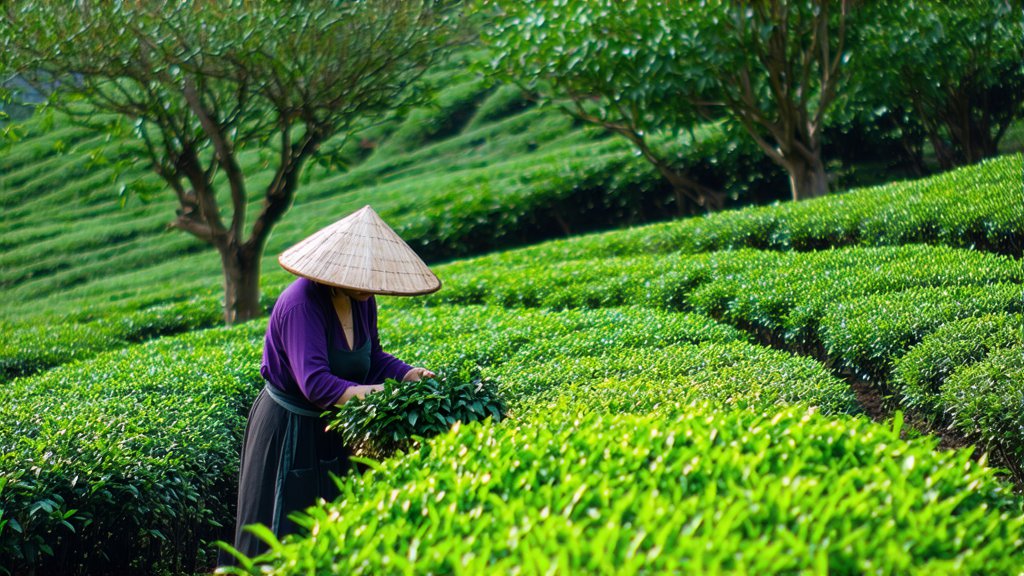
In the vast and diverse landscape of Chinese tea culture, oolong tea stands as a testament to the country's rich history and intricate craftsmanship in tea production. Among the many varieties of this semi-oxidized tea, Tieguanyin (铁观音) reigns supreme, not only for its unique flavor profile but also for the deep cultural heritage it embodies. This article embarks on a journey through the annals of Tieguanyin, exploring its origins, the art of its making, and the delicate rituals surrounding its consumption, all while offering insights into how this extraordinary tea can be best appreciated by connoisseurs and novices alike.
A Glimpse into History
Tieguanyin, often referred to as the "Iron Goddess of Mercy," traces its roots back to the early 18th century in the Anxi region of Fujian province, China. Legend has it that the tea was discovered by a poor scholar named Wei Yin who stumbled upon a wild tea plant while studying for imperial exams. Impressed by the plant's resilience and the exceptional quality of its leaves, he propagated it, giving rise to what we now know as Tieguanyin. Over time, this tea gained immense popularity, earning accolades from emperors and becoming a symbol of prestige and refinement.
The Many Facets of Tieguanyin
Tieguanyin is not just a single tea; it encompasses a range of sub-varieties, each with its own distinct characteristics. The most renowned among them are Xiangxing (香型), meaning fragrant type, which emphasizes floral and fruity aromas; Dancong (单枞), or single bush, known for its complex flavors derived from ancient trees; and Rouyun (肉韵), or 'fleshy rhyme,' celebrated for its creamy texture and long-lasting aftertaste. These variations cater to different palates, showcasing the versatility of Tieguanyin.
The Craft of Tea Making
The creation of Tieguanyin is an art form that requires meticulous attention to detail and years of experience. The process begins with selective hand-picking of young shoots and leaves, usually during the spring or autumn harvests when the plants are at their freshest. After plucking, the leaves undergo a series of steps: withering under the sun to reduce moisture content, agitation to bruise the edges and initiate oxidation, followed by careful rolling to shape the leaves and further control oxidation.
One of the defining features of Tieguanyin production is the multiple rounds of roasting and turning, which contribute to its signature roasted aroma and rich flavor. The final step involves sorting and grading the dried leaves, ensuring only the finest quality makes it into the market. This labor-intensive process results in a tea that is both visually stunning, with tightly rolled pellets, and aromatic, releasing a captivating scent that hints at its complexity.
The Ritual of Gongfu Brewing
To truly appreciate Tieguanyin, one must engage in the traditional Chinese tea ceremony known as Gongfu brewing. This method emphasizes precision, patience, and a deep respect for the tea. Here’s a simplified guide to experiencing Tieguanyin in its full glory:
-
Warm the Teapot and Cups: Begin by rinsing your teapot and cups with hot water to ensure they are clean and to maintain the tea's temperature.
-
Measure the Leaves: Use approximately 5 grams of Tieguanyin per 100ml of water. Place the leaves into a Yixing clay pot or a Gaiwan, a traditional Chinese teapot without handles.
-
First Infusion: Pour boiling water over the leaves and immediately pour it out to rinse the leaves, removing any impurities and awakening the tea's flavors.
-
Subsequent Infusions: For the first few infusions, steep the tea for about 15-20 seconds, gradually increasing the steeping time with each subsequent brew. Tieguanyin can typically be brewed up to 7-10 times, each infusion revealing new layers of flavor.
-
Observe and Sip: As you pour the brewed tea into cups, take note of its color—a pale gold hue indicative of its oxidation level. Inhale deeply to capture the aroma before taking small sips, allowing the tea to coat your palate and savor the intricate balance of sweetness, bitterness, and umami.
-
Appreciate the Leaves: After several infusions, examine the unfurled leaves, which can offer clues about the tea's quality and processing.
Conclusion
Tieguanyin is more than just a beverage; it is a cultural treasure that encapsulates centuries of tradition, artistry, and philosophy. From its mythical origins to the meticulous craftsmanship involved in its production, and the meditative practice of Gongfu brewing, every aspect of Tieguanyin invites exploration and contemplation. By delving into this world, international readers can gain a deeper understanding and appreciation for not only Tieguanyin but also the broader spectrum of Chinese tea culture, fostering a global connection through the shared enjoyment of this timeless elixir.